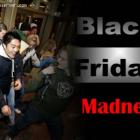Copper fish AKA Poisson Cuivre in Haiti - Tips
ADVERTISEMENT
What happens once the plant-feeding fish ingest the toxins, they then become food for larger flesh-eating fish until it reaches the apex of the food chain in bigger fish: moray eels, groupers, trigger fishes, and barracudas. These are the fish caught, brought to market, and that end up on a family's table. The problem with ciguatoxin is that it has no odor, taste, and cannot by contaminated by the usual cooking methods.
Scientists have tried unsuccessfully to find clusters of ciguatoxin in fish samples under clinical testing, some of which include methods to discover the algae through florescence imaging, and other types of lab testing. In another form of testing, marine-life amateurs take a silver coin and insert it beneath the scales of a fish, believed to be harboring ciguatoxin. When removed from the scales, a blackened coin signifies ciguatoxin is present. However, this method is not considered scientifically accurate. Ciguatera toxins can also be found in salmons at fish farms.
Read more: food, fish, Food Tips, Copper fish, Poisson Cuivre, Poison, Agriculture and Food
« Signs and symptoms of Copper fish - Fish Poisoning Tips | Main | Remedies and Treatment for Copper fish - Poisson Cuivre »
Leave a Reply
Name (required) E-mail (required, will not be published)
» »
Our objective is to share with you news and information about Haiti and the people of Haiti. Traditions, habits and the way we were or grew are alive in this site. We highly recommend that you Subscribe to our Newsletter and also share with us some of the things that are memorable and made us unique people.


 Something to think about
Something to think about  Black Friday Shopping Season
Black Friday Shopping Season  Verrettes, Haiti
Verrettes, Haiti  La Chapelle, Haiti
La Chapelle, Haiti  Haitian Thanksgiving
Haitian Thanksgiving